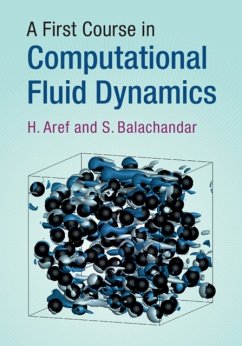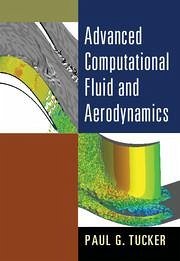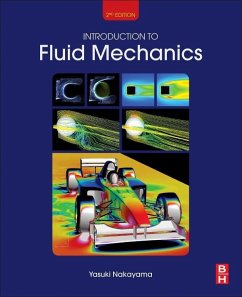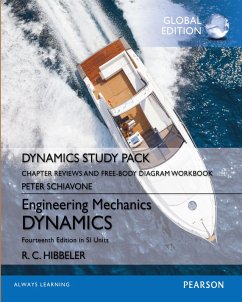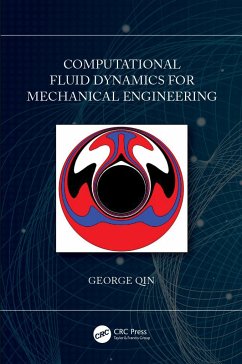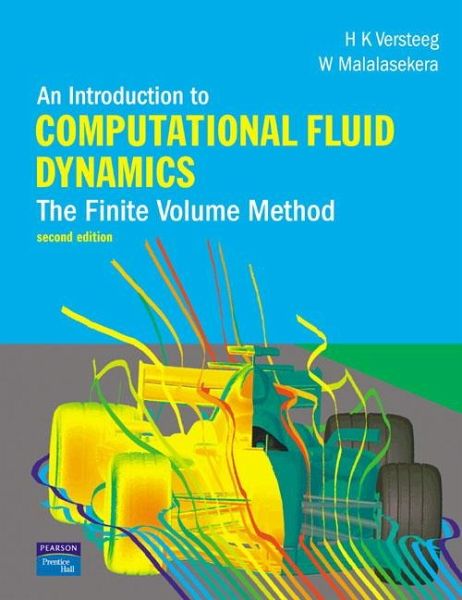
Introduction to Computational Fluid Dynamics, An
The Finite Volume Method

PAYBACK Punkte
55 °P sammeln!
This established, leading textbook, is suitable for courses in CFD. The new edition covers new techniques and methods, as well as considerable expansion of the advanced topics and applications (from one to four chapters).
This book presents the fundamentals of computational fluid mechanics for the novice user. It provides a thorough yet user-friendly introduction to the governing equations and boundary conditions of viscous fluid flows, turbulence and its modelling, and the finite volume method of solving flow problems on computers.
Product Description
This established, leading textbook, is suitable for courses in CFD. The new edition covers new techniques and methods, as well as considerable expansion of the advanced topics and applications (from one to four chapters).
This book presents the fundamentals of computational fluid mechanics for the novice user. It provides a thorough yet user-friendly introduction to the governing equations and boundary conditions of viscous fluid flows, turbulence and its modelling, and the finite volume method of solving flow problems on computers.
Features + Benefits
Presents a broad introduction to fluid and turbulence physics and computational modelling techniques.
Incorporates an advanced applications section.
Uses easy-to-programme computer algorithms for the PC.
Includes a substantial review of the latest turbulence modelling techniques.
Features the predominant commercial CFD codes: PHEONICS, FLUENT, FLOW3D and STARCD.
SI units used throughout.
Backcover
The use of Computational Fluid Dynamics to simulate and predict fluid flows, heat transfer and associated phenomena continues to grow throughout many engineering disciplines. On the back of ever more powerful computers and graphical user interfaces CFD provides engineers with a reliable tool to assist in the design of industrial equipment often reducing or eliminating the need for performing trial-and-error experimentation.
An Introduction to Computational Fluid Dynamics is the ideal text for the newcomer to the area whether they be undergraduates, graduates, or professionals. It provides thorough yet accessible coverage of commercial finite volume based CFD codes within the context of the underlying theory, giving the reader a full appreciation of CFD and its numerous engineering applications.
Key features
Offers essential support for novice users of commercial CFD codes such as ANSYS CFX, FLUENT, STAR-CD and PHOENICS.
Covers fluids and turbulence physics together with computational modelling techniques
Uses a step-by-step approach to introduce the methodology
Chapter summaries and worked examples throughout to reinforce understanding of the key concepts
New to this edition
A new chapter describing unstructured meshing techniques
A new chapter on CFD uncertainty
New coverage of the fundamentals of Large-Eddy Simulation (LES) and Direct Numerical Simulation (DNS) techniques
Summaries of TVD techniques and multi-grid solution techniques
Added examples of the SIMPLE algorithm for pressure-velocity coupling
Two new chapters with advanced material covering combustion and radiative heat transfer modelling
H K Versteeg and W Malalasekera are both senior lecturers in Thermo-Fluids, at Loughborough University.
Chapter 1 Introduction
Chapter 2 Conservation laws of fluid motion and their boundary conditions
Chapter 3 Turbulence and its modelling
Chapter 4 The finite volume method for diffusion problems
Chapter 5 The finite volume method for convection-diffusion problems
Chapter 6 Solution algorithms for pressure-velocity coupling in steady flows
Chapter 7 Solution of systems of discretised equations
Chapter 8 The finite volume method for unsteady flows
Chapter 9 Implementation of boundary conditions
Chapter 10 Uncertainty in CFD modelling
Chapter 11 Methods for dealing with complex geometries
Chapter 12 CFD modelling of combustion
Chapter 13 Numerical calculation of radiative heat transfer
Appendices
References
Index
This book presents the fundamentals of computational fluid mechanics for the novice user. It provides a thorough yet user-friendly introduction to the governing equations and boundary conditions of viscous fluid flows, turbulence and its modelling, and the finite volume method of solving flow problems on computers.
Product Description
This established, leading textbook, is suitable for courses in CFD. The new edition covers new techniques and methods, as well as considerable expansion of the advanced topics and applications (from one to four chapters).
This book presents the fundamentals of computational fluid mechanics for the novice user. It provides a thorough yet user-friendly introduction to the governing equations and boundary conditions of viscous fluid flows, turbulence and its modelling, and the finite volume method of solving flow problems on computers.
Features + Benefits
Presents a broad introduction to fluid and turbulence physics and computational modelling techniques.
Incorporates an advanced applications section.
Uses easy-to-programme computer algorithms for the PC.
Includes a substantial review of the latest turbulence modelling techniques.
Features the predominant commercial CFD codes: PHEONICS, FLUENT, FLOW3D and STARCD.
SI units used throughout.
Backcover
The use of Computational Fluid Dynamics to simulate and predict fluid flows, heat transfer and associated phenomena continues to grow throughout many engineering disciplines. On the back of ever more powerful computers and graphical user interfaces CFD provides engineers with a reliable tool to assist in the design of industrial equipment often reducing or eliminating the need for performing trial-and-error experimentation.
An Introduction to Computational Fluid Dynamics is the ideal text for the newcomer to the area whether they be undergraduates, graduates, or professionals. It provides thorough yet accessible coverage of commercial finite volume based CFD codes within the context of the underlying theory, giving the reader a full appreciation of CFD and its numerous engineering applications.
Key features
Offers essential support for novice users of commercial CFD codes such as ANSYS CFX, FLUENT, STAR-CD and PHOENICS.
Covers fluids and turbulence physics together with computational modelling techniques
Uses a step-by-step approach to introduce the methodology
Chapter summaries and worked examples throughout to reinforce understanding of the key concepts
New to this edition
A new chapter describing unstructured meshing techniques
A new chapter on CFD uncertainty
New coverage of the fundamentals of Large-Eddy Simulation (LES) and Direct Numerical Simulation (DNS) techniques
Summaries of TVD techniques and multi-grid solution techniques
Added examples of the SIMPLE algorithm for pressure-velocity coupling
Two new chapters with advanced material covering combustion and radiative heat transfer modelling
H K Versteeg and W Malalasekera are both senior lecturers in Thermo-Fluids, at Loughborough University.
Chapter 1 Introduction
Chapter 2 Conservation laws of fluid motion and their boundary conditions
Chapter 3 Turbulence and its modelling
Chapter 4 The finite volume method for diffusion problems
Chapter 5 The finite volume method for convection-diffusion problems
Chapter 6 Solution algorithms for pressure-velocity coupling in steady flows
Chapter 7 Solution of systems of discretised equations
Chapter 8 The finite volume method for unsteady flows
Chapter 9 Implementation of boundary conditions
Chapter 10 Uncertainty in CFD modelling
Chapter 11 Methods for dealing with complex geometries
Chapter 12 CFD modelling of combustion
Chapter 13 Numerical calculation of radiative heat transfer
Appendices
References
Index
Provides coverage of Computational Fluid Dynamics (CFD) codes within the context of the underlying theory, giving the reader an appreciation of CFD and its numerous engineering applications. This work includes coverage of the fundamentals of Large-Eddy Simulation (LES) and Direct Numerical Simulation (DNS) techniques.
Dieser Artikel kann nur an eine deutsche Lieferadresse ausgeliefert werden.




